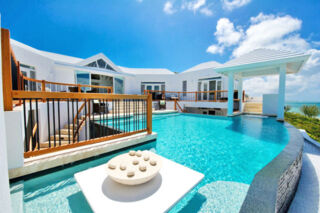Turks and Caicos Home Building & Construction
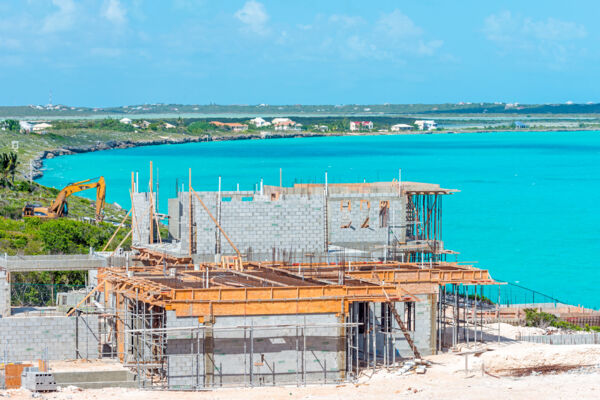
Constructing a home on a tropical island can appear daunting, yet the fact is it has never been easier to do so in the Turks and Caicos than it is today. This guide offers a brief general overview of the building process, along with various bits of advice to reduce the potential for problems.
In many cases, be it those interested in a vacation home, retirees, or investors, it may be wise to spend a significant amount of time on the island before committing to a project. Life in the Turks and Caicos has many positive features, and undeniably many negatives as well, including the high cost of living, inefficiencies in some services, and some types of crime. Spending time in the islands will provide some clarity on the issues.
Purchasing Real Estate
Selecting the location of your dream home is arguably the most important decision you’ll have to make when building a home in the islands. Although Turks and Caicos is a very small country, undeveloped beachfront and oceanfront lots can still be found on all the main islands.
Turks and Caicos real estate prices are generally high, and the price per acre of vacant land on Providenciales typically starts at around $450,000 (2025 price).
For more information on buying property, see our Real Estate Location Guide and Buying Guide.
The Overall Process and Government Requirements
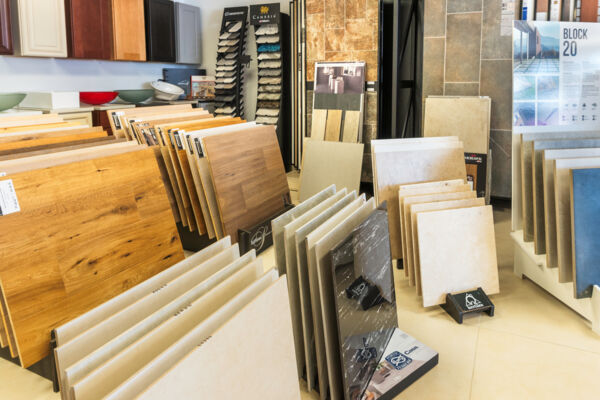
- Find and acquire your desired piece of real estate.
- Work with an architect to develop your design. You can work with a foreign architect, but you’ll need to have it signed off on by a locally licensed architect. (Exceptions may exist for single-story residential homes).
- You’ll need planning permission, which will take around 3 months. You must receive planning permission and a Building Permit before you can start construction.
- Find a contractor or project manager that you’re comfortable with. It’s advised to inspect prior work and agree on a detailed payment schedule.
- An Occupancy Certificate is obtained after a building is completed and it has been inspected. The certificate is required before the structure can be legally inhabitable, and for it to be eligible for connection to utilities.
Architects and Engineers
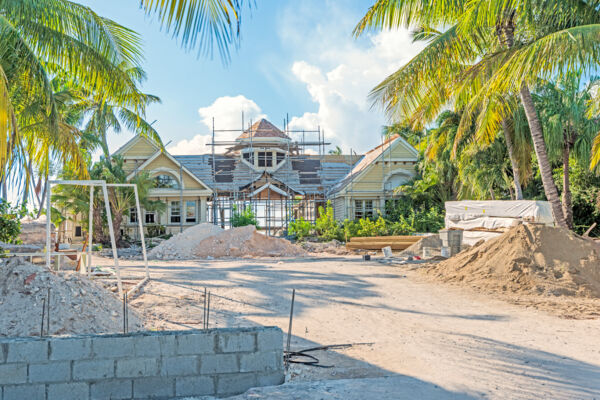
The Turks and Caicos is home to a wide selection of architects, which is the natural outcome from the tourism and luxury market that took root over the last twenty years. Nearly all firms are based on the island of Providenciales, which hosts most development in the country.
A modern take on the British Bermudian Colonial architecture is the prevailing style for the most part, however, the contemporary Caribbean look is also becoming common for residences.
We highly advise considering a potential architect’s work before committing. The majority of luxury residences on Providenciales are found in one of several distinct regions, so it’s possible to see over a short period of time quite a few examples of work from each local firm.
Builders and Project Managers
A common practice is to hire the services of a project manager to oversee construction and sub-contractors. We generally advise taking this route as it greatly streamlines the building process.
Skilled construction labor can definitely be found on Providenciales, however the old saying of jack of all trades, master of none definitely applies to local construction. A good project manager will excel at delegation and the selection of sub-contractors.
Structural Design Features
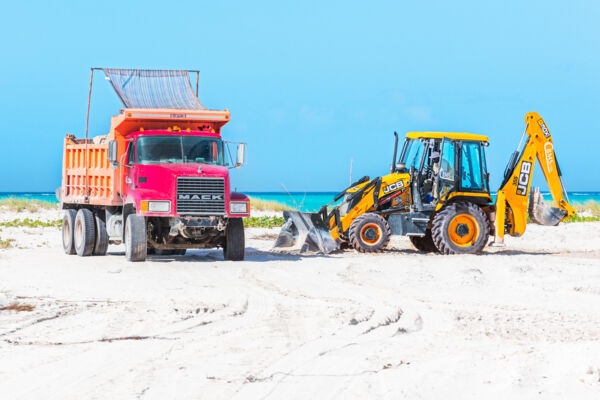
If your budget allows, you may wish to use reinforced poured concrete for the building structure, including decks and balconies. When properly engineered and executed, poured concrete will generally greatly outlast other common building materials, in addition to being largely maintenance-free.
Custom-fabricated stainless steel railings are becoming more popular and are another good choice due to their strength and corrosion resistance. It’s common for standard steel fixtures (such as light fixtures and railings) to rapidly rust in the harsh marine environment of the islands.
Termites are common in the Turks and Caicos. Pressure-treated lumber generally survives quite well. Most other types of wood, including cedars and regardless of paint or stain coatings, are at serious risk of infestation.
It’s important to be aware of rainfall patterns in the country when planning for drainage. Providenciales experiences about 43 inches (109 cm) of rain per year, and much of this rainfall occurs over two or three multiple-day periods. Such significantly heavy rainfalls often overwhelm inadequate drainage, which may be a problem for the lower levels of structures.
Water and Cisterns
In some situations, it’s required by the building code to have a cistern for water storage.
Many of the residential regions on Providenciales are supplied by piped “City Water” freshwater utilities, however not all areas are. For those without utility water, when roof rain collection is inadequate for use water is typically purchased by the truckload from a desalination site. As of 2020, piped “City Water” water rates are about 4 cents per gallon (a little less than 1 cent per liter).
Due to the salinity levels, well water is often not suitable for direct potable water use.
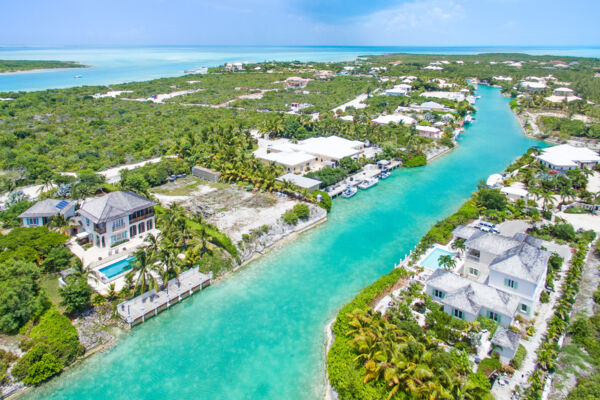
Pools
As a tropical destination, swimming pools are a common vacation rental amenity in the Turks and Caicos.
Both the typical chlorinated and saltwater pools are found in the country. Supplies and maintenance for both are available locally. Heating is not typically necessary, yet when desired, a solar system is a good choice.
Infinity pools, especially for ocean-view lots, are increasingly the chosen design style for luxury homes.
Windows and Doors
Building costs in the Turks and Caicos are expensive, and in many cases, it makes sense to select better quality fixtures as installation labor costs are comparatively expensive.
Premium windows and doors are one such example. In addition to the peace of mind, security, and storm-rated windows simply last longer due to the higher levels of material quality.
When air conditioning will be installed, it’s important to consider the insulation (R-factor) of windows and doors. Moreover, the use of insulation in walls is not very common, as filled concrete blocks and poured concrete (without insulation) are common choices.
Hurricanes
Although major storms are statistically rare in the islands, Murphy’s Law suggests that the hurricane of the century will strike directly after you complete your home. The design and features of your residence can greatly mitigate the damage and inconvenience from a hurricane.
First and foremost is to consider flooding, both from rainfall and storm surge. If your site is in a low-lying area, consider reserving the bottom level for utilities and outdoor furniture and equipment storage.
It’s a major convenience to have storm or hurricane-resistant shutters designed and built into the home. When easy to implement, shutters will tend to be used for more than storms, such as when the house is unoccupied.
Many of the luxury residential regions on Providenciales, including areas of Turtle Tail and Leeward, experience road flooding from storm surges during significant tropical cyclones. Roads may be impassable, and even when within wading depth of vehicles, doing so will greatly accelerate corrosion and reduce car life due to the salty ocean water.
Reinforced concrete block, and to a much greater degree poured concrete, are quite robust construction methods and will typically withstand any storm. Doors, windows, and roofs will typically be the weak point.
Fixtures, Fasteners, and Corrosion
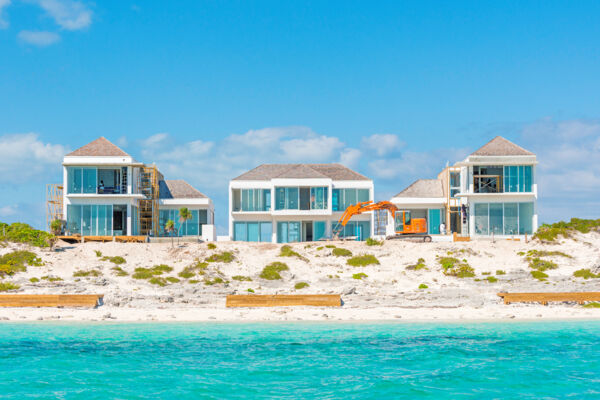
When selecting materials and fittings, it’s important to be aware of the marine environment of the Turks and Caicos. The general high salinity of the air, ground, and tap water will rapidly corrode most metals, including some stainless steel alloys. High-quality fixtures are certainly not inexpensive, yet are worth the added cost.
In the case of hardware, locks, and bathroom and kitchen fittings, it’s important to avoid cast zinc alloys and stamped (non-stainless) steel regardless of the surface plating as these metals rarely last.
Wherever feasible, we advise using stainless steel screws and nails. Their higher initial cost is definitely preferable to the inevitable future rust staining and failure of steel fasteners. Stainless is certainly not immune to rust, however, light surface corrosion is usually the worst-case scenario.
Hot-dipped zinc galvanized nails, screws, and bolts, when used in the common outdoor setting, will typically begin to rust and stain within 10 years, and possibly become structurally unsound within twenty years. When near the ocean, this time frame is months rather than years.
Protect Your Car
Consider including a vehicle garage or covered carport. The environment in the Turks and Caicos is quite salty and corrosive, and the intense sun destroys automotive paints and interiors, yet garages are surprisingly uncommon. Shelter for your vehicle will greatly increase its lifespan.
Photovoltaic and Sustainable Energy
Be aware that some appliances that carry an Energy Star rating may be imported at lower customs duty rates. Included in this category are air conditioning units.
Solar Panels and Renewable Energy
The local energy company Pelican Enerty TCI (formerly Fortis TCI Limited) is the sole supplier of electricity for Providenciales, North Caicos, Middle Caicos, and South Caicos. Electricity is provided on Grand Turk and Salt Cay by Turks and Caicos Utility Limited, a wholly-owned subsidiary of Pelican Energy TCI. As of 2020, nearly all electricity is generated via diesel generators.
The ‘2016 Energy Sector Legislative and Regulatory Framework Reform’ is an ongoing consultative process which aims to reform the energy sector in the Turks and Caicos. As part of this process, Pelican Energy TCI Limited has instituted two programs to encourage the adoption of renewable solar energy in the Turks and Caicos: the CORE and UORE programs.
CORE, or Customer Owned Renewable Energy, are customer-owned solar installations where electricity is fed into the local grid. Unfortunately, this program requires that 100% of electricity generated is sold to the grid (at a discount), and all power consumed by the customer is purchased at the full price from Pelican Energy TCI. Their program does not allow one to simply sell the excess electricity from a home photovoltaic setup.
UORE, or Utility Owned Renewable Energy, is a similar program, but the actual equipment is the property of Pelican Energy TCI.
Solar Hot Water
To save on electrical bills, it’s highly advisable to use a solar water heating setup. There are two basic routes to go: a thermosiphon system or a split system.
Now common throughout the Caribbean, a thermosiphon unit, where the hot water storage tank is located at the solar panel, is the simplest and least expensive option. This system relies on the natural action of rising hot water to cycle water through the panel and is the best choice for most situations in the Turks and Caicos environment.
The more-complex split system has the panels separated from the storage tank, and a small pump circulates water through an exchanger in the storage tank, which transfers the heat to the household water. This setup is the typical choice for regions where freezing may be an issue as antifreeze may be the liquid cycled through the solar panels.
An optional backup electric heating element in the storage tank can provide hot water for the rare periods of extended cloud cover.
Natural Gas and Propane
Natural gas is not available in the country. There are no piped gas utilities.
Propane can be purchased locally in volume by the truck on Providenciales. Propane will ultimately cost a bit less than electricity for cooking, water heating, and clothes drying, however, the additional system and complexity may not be worth the power bill savings.
Building Supplies
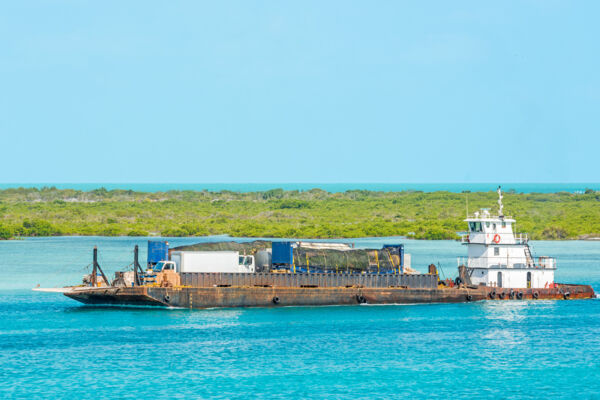
Providenciales is home to an expansive Do It Best building center, and unlike the majority of retail stores in the country, this complex actually compares favorably to the common hardware chain stores in the United States. Catering to the growing construction market, this store also stocks bulk building materials such as sand, gravel, cement, and aggregate blocks.
Quite a few small building and hardware stores are also located on Providenciales, some of which specialize in distinct areas including flooring and tiles, electrical and more.
As to be expected, prices at local hardware stores are higher than at their average counterparts in the United States. It of course varies quite a bit, however prices are typically between 60% and 100% higher than the average in the United States or Canada. Customs import duty (at nearly 40%), freight, and the high cost of utilities largely account for this difference.
When building a house, the majority of supplies required will be known before construction begins, and independently purchasing these materials in the United States and importing them by container through a local ocean freight firm will often result in significant cost savings.
Landscaping
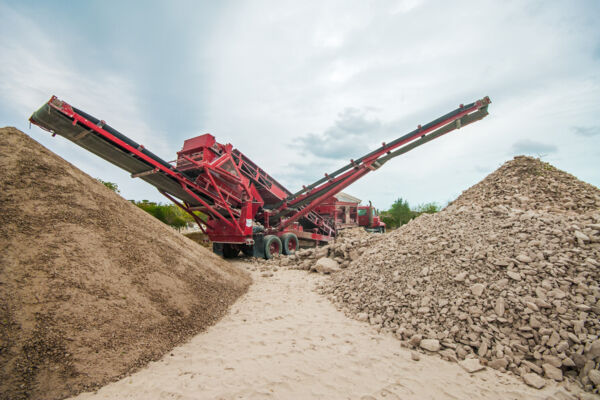
There are several nurseries on Providenciales, and collectively they offer a wide selection of transplantable and fully grown palms and trees, including coconut, date, royal, and fan palms.
The Turks and Caicos does not experience significant weather changes throughout the seasons, so certain plant pests and diseases are well-established. A good example is the armyworm, a caterpillar that devours vines and flowers such as the bougainvillea. If a plant is a variety that is consumed by the armyworm, regular spraying with insecticide will be necessary.
Perhaps due to the low maintenance and initial cost, imported landscaping gravel is the typical choice for ground cover. Grass lawns are a rarity because of the watering requirements and the overall lack of topsoil in the country.
Native Vegetation
It’s a good idea to consider indigenous and low-maintenance plants and trees. The Turks and Caicos experiences very little rainfall, and many introduced types of vegetation, although beautiful, often require large amounts of water to survive.
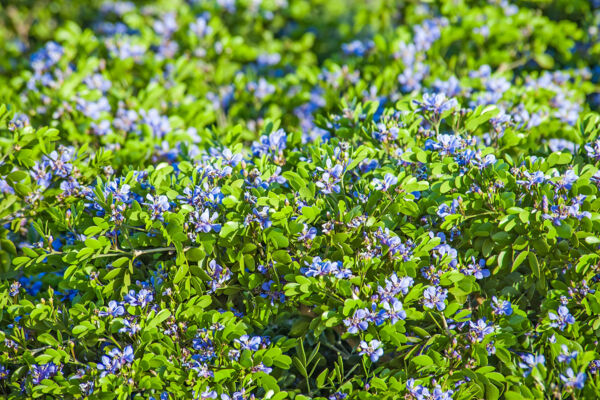
A common and significant mistake when clearing for natural landscaping is to simply remove all but the largest trees. Unfortunately, some of the largest and fastest-growing trees are also generally the poorest from a landscaping perspective, yet these are all-too-often the trees left after clearing.
The endangered lignum vitae (Guaiacum sanctum) is one of the finest native trees in the country and can be found in almost all areas. We highly advise protecting and nurturing this tree. Although slow growing when in the wild, the lignum vitae springs up when cleared around and watered. The tree is highly resistant to drought, pests, and diseases. When knocked over in a storm, these trees re-root quite well when propped back up.
Silver buttonwood is another good landscaping choice. Naturally common to wetland regions, when the competition is controlled, this tree does very well in most environments.
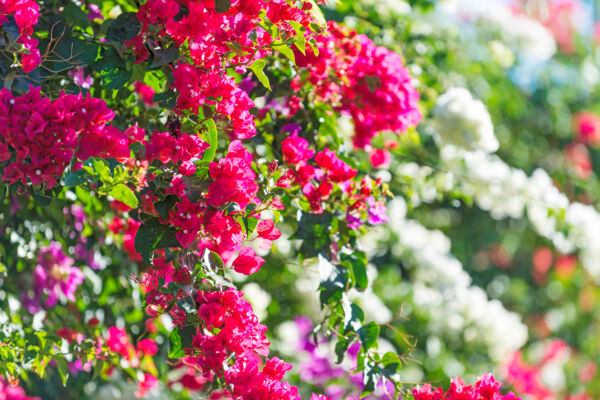
Several types of smaller decorative plants are found wild, including air plants and a few varieties of orchids (several of which are endemic and endangered), and these tend to transplant quite easily. Before clearing your ground for construction, consider temporarily relocating these epiphytes for future use.
Interior Design and Decorating
A few professional interior design agencies are found on Providenciales, and largely cater to the luxury villa vacation rental market.
Local sources of furniture are limited and costly, and consequently, a common practice is to simply fill a shipping container in the United States with furnishings and décor and import it into the country.
For the finishing touch, quite a few art and design shops can be found in Grace Bay.
Villa Management
Last but not least is villa management. Many owners put their property on the Turks and Caicos villa market for short-term stays when they’re not in the islands, yet this practice typically requires someone present in the islands to prepare the villa and to meet guests. A villa management company can oversee these tasks.
Rates are mainly determined by the location and desirability of the accommodation, and the amount of involvement of the management company (in terms of interior design, maintenance, and cleaning).
Local Businesses
